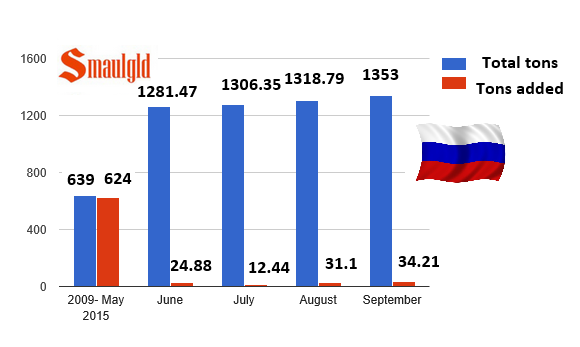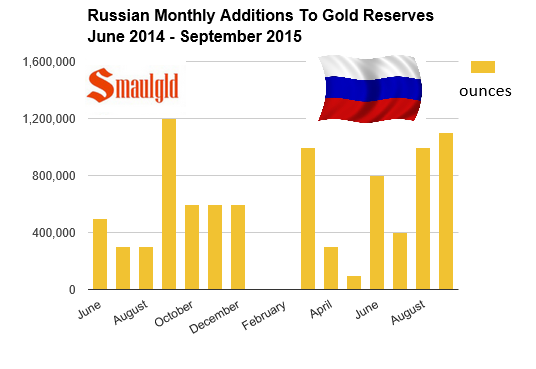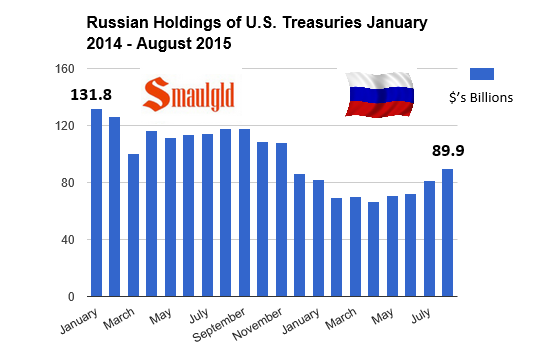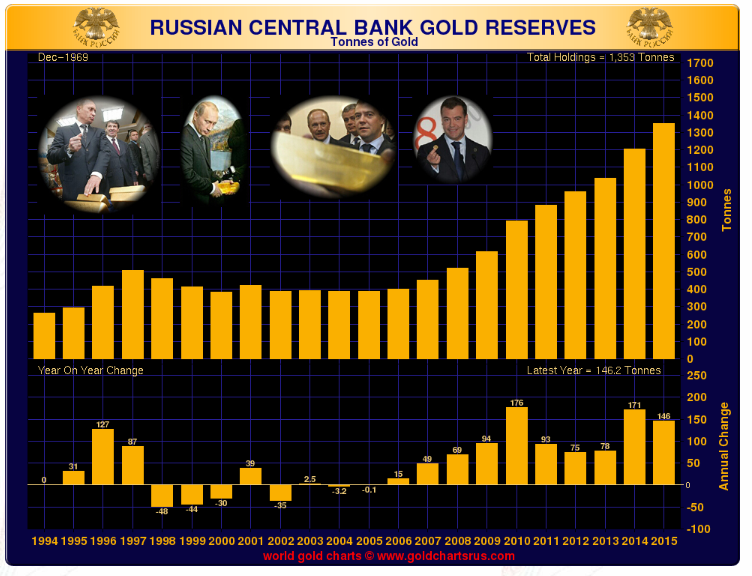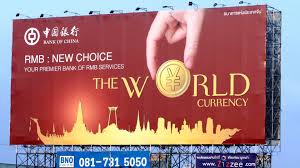The New Development Bank (NDB)
has started prioritizing projects for 2016, according to Russian
Industry and Trade Minister Denis Manturov.
NDB was established by the BRICS member states – Brazil, Russia,
India, China and South Africa – in 2014 to complement the World Bank.
The bank’s main goal is to promote sustainable development in BRICS
states. In July the bank opened for operations in Shanghai with the
startup capital of $50 billion.
“BRICS New Development Bank which has already started the
selection of next year’s priority projects, will contribute in
attracting investment in joint projects in a wide range of industries,” Manturov said Tuesday at the first meeting of BRICS industry ministers in Moscow.
Russia has developed a roadmap of trade and investment cooperation
with all the BRICS countries through till 2020, the minister added. It
includes projects in manufacturing, mining, engineering, energy and many
other sectors of the economy.
“We are ready to work them out and
determine the range of initiatives that will be implemented jointly with
the assistance of the new development bank and national mechanisms of
support,” the minister said.
https://www.rt.com/business/319173-brics-bank-projects-cooperation/
CHINA CALLS FOR NEW GLOBAL CURRENCY
China is calling for a global currency to replace the dominant
dollar, showing a growing assertiveness on revamping the world economy
ahead of next week’s London summit on the financial crisis.
The surprise proposal by Beijing’s central bank governor reflects
unease about its vast holdings of U.S. government bonds and adds to
Chinese pressure to overhaul a global financial system dominated by the
dollar and Western governments. Both the United States and the European
Union brushed off the idea.
The world economic crisis shows the “inherent vulnerabilities and
systemic risks in the existing international monetary system,” Gov. Zhou
Xiaochuan said in an essay released Monday by the bank. He recommended
creating a currency made up of a basket of global currencies and
controlled by the International Monetary Fund and said it would help “to
achieve the objective of safeguarding global economic and financial
stability.”
Zhou did not mention the dollar by name. But in an unusual step, the
essay was published in both Chinese and English, making clear it was
meant for a foreign audience.
China has long been uneasy about relying on the dollar for the bulk
of its trade and to store foreign reserves. Premier Wen Jiabao publicly
appealed to Washington this month to avoid any response to the crisis
that might weaken the dollar and the value of Beijing’s estimated $1
trillion in Treasuries and other U.S. government debt.
For decades, the dollar has been the world’s most widely used
currency. Many governments hold a large portion of their reserves in
dollars. Crude oil and many commodities are priced in dollars. Business
deals around the world are done in dollars.
http://abcnews.go.com/Business/story?id=7168919&page=1
One day it sure as shit will….I dont think it will be the yuan and if it is it won’t last for more than a few years…
The 2 quadrillion derivatives bubble is meant to take down every paper currency on earth and most likely every corporation
Use of derivatives is growing in anticipation of a hike in global
interest rates. The increased demand for hedging instruments is placing a
strain on dealers, which face rising derivatives trading costs as a
result of recent regulation.
A new report, Corporate Derivatives Use Continues to Grow — Dealers
Say Not So Fast, released by Greenwich Associates examines the results
of a study of nearly 400 corporate treasurers globally and finds that
corporate use of derivatives has climbed since the financial crisis with
the annual interest-rate derivatives trading volume of the typical big
corporate user growing to $3 billion in 2014 from $2 billion in 2006.
The vast majority of these users—87% of study respondents—say new
regulations have had no impact on their use of derivatives.
The story is much different for the dealers which companies rely on
to execute these trades. While Dodd-Frank exempted corporate “end users”
from its trading and clearing mandates, dealers executing bilateral
trades with these clients are subject to much higher capital costs than
those imposed on cleared trades for other clients. “Banks will be, and
in some cases already are, passing these new costs down to the client,”
says Kevin McPartland, Head of Market Structure and Technology Research
at Greenwich Associates.
Over half the corporations participating in the study are paying
credit charges to their dealer as part of the initial transaction to
offset the dealer’s cost of capital under Basel III.
http://www.commodities-now.com/reports/portfolio-management/18860-corporate-use-of-derivatives-up-50-post-crisis.html
In yet another sign of its growing prominence on the global financial
stage, China called for a new world reserve currency to replace the
dominant dollar.
An ABC news report said China is showing “growing assertiveness” on revamping the world economy:
The surprise proposal by Beijing’s central bank governor reflects unease
about its vast holdings of U.S. government bonds and adds to Chinese
pressure to overhaul a global financial system dominated by the dollar
and Western governments.”
http://schiffgold.com/key-gold-news/china-calls-for-new-global-reserve-currency-to-replace-dollar/?utm_medium=social&utm_source=twitter&utm_campaign=gold-news&utm_content=peterschiff
China’s money supply growth dwarfs the rest of the world
A file picture dated 10 May 2011 shows Chinese 100 yuan or Renminbi
(RMB) notes and coins in Beijing, China. China is moving to boost the
international strength of its currency by announcing on 03 November 2014
plans to turn Frankfurt, Germany into the eurozone centre for trading
in the yuan. Transactions in yuan in a newly established clearing house
operated by the Bank of China will begin on November 17.
hina’s broad money supply growth between 2007 and 2013 was greater
than that of the rest of the world combined, spurring the country’s
rapid economic expansion but creating the risk of asset price bubbles
and widespread loan defaults.
Analysis by Ousmène Jacques Mandeng, a former deputy division chief
at the International Monetary Fund, suggests China’s broad money rose by
$12.9tn in the seven years to 2013, outstripping the $11tn rise of the
rest of the world.
“The Chinese money wall may well dwarf anything in the international
financial system including unconventional monetary policy [such as
quantitative easing],” says Mr Mandeng, who describes China’s growth of
M2 broad money — a measure that includes cash in circulation, savings
and time deposits — as “scary”.
“This is a reflection of massive expansion of bank balance sheets in
China. It’s a big, big thing and it is lost on most people,” he says.
Mr Mandeng is head of research and development at New Sparta Asset
Management, an emerging markets-focused house set up by Jerome Booth,
the co-founder of Ashmore.
He calculates that China’s M2 rose 18.4 per cent a year between 2008 and 2013.
http://www.ft.com/intl/cms/s/3/c85cb7b0-62a1-11e5-9846-de406ccb37f2.html
The key for China is gaining the support of a major financial centre
in the West, otherwise everything they spout is just hot air, but it
seems the City of London is the go to place at the moment to turn those
Chinese dreams into reality, especially now they have removed the RFQII
cap with the UK and replaced it was a market demand cap, and are now
planning to issue short term RMB denominated debt in London..
Be interesting to see the speech Xi will give in the City of London
today, and what deals are signed, thus far all we know is 150 deals are
to be signed, and some of them are financial ones.. but the BoE seems to
be betting the bank on China, hence supporting the internationalisation
phase…
Honestly, can’t see any of this going down well the US and the
Special Relationship… and to be honest I have no idea where this will
leave US/UK relations.. I guess it’s a wait and see moment, could all be
more hot air or could be something much more..
China to issue short term debt in London.
http://www.ft.com/intl/cms/s/3/c85cb7b0-62a1-11e5-9846-de406ccb37f2.html#axzz3pCE90EOA
I.O.A.








